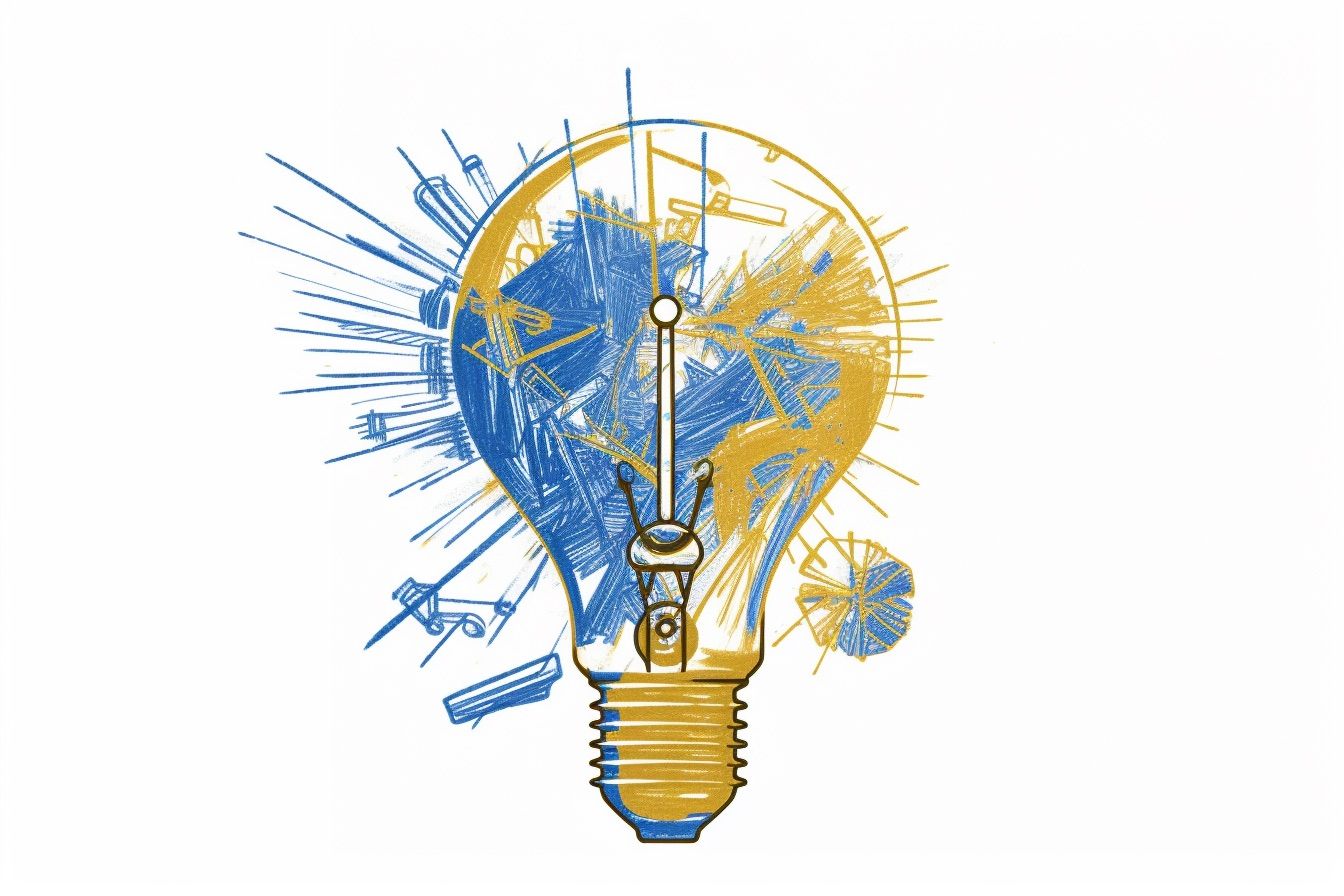How To Build an App
I know many of us seek to build an app, yet it may seem overwhelming to get there. I already did this a few times and crafted my own roadmap to design, build, market, and scale a mobile app. This article shares how.

How can I build an app? Where do I start? What do I need to do?
I've already received these questions and variations thereof many times. The questions are so high-level that there could be no tangible answers. Unfortunately, my online research mostly yields articles that fall into this category. This one shouldn't.
I will give you an answer in this post. For that, I'm assuming your context is along the lines of this:
- You have an idea for an app
- You have some technical and/or design skills
- You seem overwhelmed and don't know what to do
Beware that this article is targeted at solo developers with the aim of building a simple "lifestyle business"-type app. It's not intended for your next billion-dollar app startup, nor for a simple "Hello World" project.
This post is not about coding, not about design, and not about marketing either. It covers the whole process – my personal roadmap, built on many years of experience. With time, I'll try to create separate posts for each of these topics that even cover a whole host of books. If you want to access the fast lane to that knowledge, I recommend considering my one-on-one mentoring offer.
Contents
How To Build Yourself An App Business
Launching an app and turning it into a business is not that hard. It requires many steps, but none of these steps are hard. Sure, there may be tough problems along the way, but nothing that can't be solved in one way or another. The general path that I recommend looks something like this:
Step 1: Make Sure Your Idea Works
Make "fail fast, fail cheap" your mantra, and identify what's critical to make your idea a success. This will reach from technical feasibility to market analysis. There's no solid structure on how you must do this and it greatly depends on your app idea. Your intuition will guide you.
If someone already built something similar to your idea, research as much as possible about these products. Figure out what users they serve, what features they have and they might miss – generally how good they are, and how you could be better for some group of users.
If your app is very technical and you've got the skills, try to build an "ugly" concept car to test the major technological risks. If you lack the skills, hire a freelancer to do it for you. If you miss this point and find a roadblock at a later stage, it will cost you more than at the beginning.
This first step will cost you time and maybe even a bit of money, but it will be well worth it. At this point, you must make a tough decision: Is your idea worth pursuing? If so, commit and stick to it. If not, don't fall in love too much and happily abandon your idea – your next idea will come for sure.
Want to dive deeper into validating your app idea? Check out my detailed article on the topic:

Step 2: Design and Prototype
Once you have a rough idea of what you want to build, I highly recommend building your app "on paper" before diving into coding. That way you'll save yourself a lot of your precious time and are more likely to build a unique app rather than an app that looks like many others that just use a framework. There are tried and proven design processes, but you will be able to get good results with much less.
UX/UI Design
You can use free tools such as Figma to draft your different screens, their contents, and how they look, and even create an interactive prototype that you can show to other people. Make sure to use proven and widely adopted design patterns and focus on simple and delightful user experience (UX). If you don't consider yourself a great visual designer, I recommend getting inspiration from other apps, websites such as dribbble, AI tools, and maybe even hiring a freelancer to finish the visual design for you.
Monetization and Business Model
As for monetization, I recommend launching your app for free at first, with no source of revenue built-in. Still, your design should foresee how you want to monetize your app. In the current era of mobile apps, most apps follow a freemium business model and are monetized through in-app purchases: Either in the form of a one-time purchase or a recurring subscription. Make sure to have that considered in your design, so that you can switch on your revenue-generation-machine at a later step.
Step 3: Build Your MVP
Once you know what to build, it's time to start building. What technology to rely on, how to actually build your app, and by whom is a tough choice and it heavily relies on the type of app you want to build.
Programming
In my opinion, you ideally program the app yourself so that you have full control over your future asset and can improve, extend, and bugfix quickly. Even if you initially lack the skills to do so, there are many, many online resources that will help you along the way – and it's fun (most of the time).
If you don't program the app yourself and want to hire a freelancer, the quality of your app will greatly resemble the quality of your requirements. The more specific and complete, the better. You'll probably also get what you pay for.
iOS or Android
Even before programming, you must decide on the platform: iOS, Android, or both. I recommend starting with one platform unless your app relies on network effects or there's some other reason for serving the majority of mobile users from day one. If that's the case, your app may be too ambitious for a solo developer and I may even recommend starting smaller.
Technology
Depending on the platform(s) you want to serve and the type of app, you'll then have to decide on the technology to be used: Hybrid, cross-platform, or native.
If you're looking for a no-code solution, I don't know of any that gives you the full set of possibilities. Maybe it'll work for your type of app, so research it well.
Technology decisions will have far-reaching consequences and I recommend not taking them lightly. Unfortunately, there's a high lock-in associated with each technology, and switching to another choice later down the road will come at a high cost. But don't feel overwhelmed: When in doubt, go native.
Features
When building your MVP, really focus on the minimum viable product. Reduce the feature set as much as possible whilst still delivering on the promised value. This may hurt and you may launch an app that you're a bit embarrassed of, but that's exactly the point. You will improve the app later on, and frequent releases are even a good thing.
Step 4: Launch
Once you've got your MVP app working on your own phone and are happy enough to provide it to the public, it's time to prepare your launch. I think it's more effective to launch "silently" without any prior advertising or upfront promotional effort. The launch of your app is a big thing for you, but not for the world (yet), so spare the effort and focus on the product instead.
To actually launch your app through the App Store and/or Play Store, you need to sign up for a paid developer account at Apple and/or Google. After that, you'll need to populate your store entry with screenshots and texts, as well as upload your app package. Submit the app for review, resolve any issues if necessary, and boom: Your app is out to most of the world!
Step 5: Feedback Iterations
Your app will gain its first few users and it's your job now to gather as much feedback as possible from them. Ideally, your app makes it very easy to contact you and you must be responsive in answering each contact. This initial feedback is pure gold and will help you on the right track. Use it to test your whole market hypothesis and value proposition. I'm sure you will learn much more than you initially thought!
With this feedback, hone the quality of your app and improve its features, branding, and positioning. Also use this to strengthen your customer support with the techniques outlined further below.
Apart from user feedback, you'll also receive technical feedback in the form of crashes or other incidents. Make sure to monitor and resolve them early, building a high-quality app.
Step 6: Monetization
By now, you should have a well-liked app with at least a 4 star rating on the respective store(s) and a bit of traction. It's time to start generating revenue with your app.
You may even start monetizing earlier than you're comfortable with, as this will be the ultimate test of your app's value proposition. If people aren't willing to pay for it, your app just doesn't provide enough value and you need to make it better.
We already touched on your business model during the design phase and now is the time to test your hypothesis. If you designed your app well, it should be easy to incorporate your desired monetization method in its user interface. From a technical point of view, in-app purchases are rather complex on both Apple's and Google's platforms, so bring some necessary patience to the implementation process.
After launching the monetized version of your app, I recommend to take extra care of your user's feedback to learn and optimize your value proposition and pricing.
Step 7: Marketing
You should have a great app at this point – so great that people are even willing to pay money for it and some even love it in their reviews. To deliver this value to even more people, it's time to put more effort into marketing. Your marketing should pursue two goals:
- Make sure that every person who should know about your app does so. This can never be achieved, but it provides a good focal point for your efforts.
- Make sure that you can reach these people for less money than they will bring to you. In marketing terms, this means that your customer acquisition cost (CAC) must be lower than your user's life time value (LTV). Both of these should be measured.
For a simple, solo-developed app, I recommend the following forms of marketing:
Content Marketing
My favorite form of marketing is content marketing due to its value-add and longevity. Content marketing implies that you must understand your user's journey before and after they "touch" your app. In its simplest form, you provide articles, videos, and helpful tools on the topic your users use your app for and publish it on the internet. If your content gets picked up well by the algorithms and is well-made, it will live on for months or even years, bringing you a steady stream of users to your app.
Paid Advertising
Paid advertising works well if you got the magic CAC < LTV equation in check. To get to this point, you will need some experimentation with common advertisers (Google, Meta, Apple, ...) and learn what advertising works best. Once you do, you can theoretically just spend more on advertising and get more revenue and profit in turn – definitely a desirable growth lever!
Viral Growth
If your users love your app, they will inevitably recommend it to their friends and online communities. This is great, as your app then attracts exactly the kind of users that already get value out of it. Therefore, be sure to make it easy to promote your app: Sharing buttons and prompts, rewards, media assets, and more. Once your app starts growing virally, it will only compound over time.
As with design and development, marketing isn't a linear and sequential process. It never stops and it requires continual experimentation. Once you're in this process, you'll learn along the way and continually get better.
Step 8: Scaling
Infrastructure
As an app developer, it generally doesn't matter if 100 people or 100'000 people are using your app. Depending on your type of app and the technologies used, you might need to scale your (backend) infrastructure or SaaS tools. If your app doesn't need any of that, you're already good to go.
Customer Support
What will need some effort to scale however is customer support. I highly believe in great customer support and there's no reason not to provide such at any scale. However, providing great customer support at scale becomes difficult and I recommend taking measures to do so. These measures may include the following:
- Resolve common issues by making your app better
- Provide learning materials such as videos or short how-to articles
- Provide well-organized and accessible FAQs
- Create templates for the most common customer support cases
If you get completely overwhelmed by users' requests, you may need to consider additional manpower to handle it. But I doubt that will be the case when you do the above points well.
Step 9: Maintenance Mode
You made it: Your app works well, it grows organically due to your content and its many fans, your revenue is steady, and you can handle the scale. Most likely, you've achieved your initial mission or even more than that and you deserve it.
At this point, you may want to shift your focus to other projects, so reducing the effort needed to run your app is desired. Assuming you are still a solo developer, you set the pace. If you don't want to extend or improve your app, there's no pressing need for that. The only thing you must do is to ensure compatibility with the latest devices and operating system versions, where even just one release a year may be sufficient. If you feel like you've lost the spark to put more effort into your app, you can also consider selling your app on marketplaces like Flippa and hand over to the next generation of owners and operators.
The above process describes my roadmap that I've crafted and experienced over the last few years. It's obvious that I can't share everything in detail within this article – it's just too much material, and individual situations and contexts differ from app to app. If you're eager to build an app and want to do be quicker and more effective, my one-on-one mentoring may be for you. In any case, I hope the article is helpful to you and wish you success!
– Dominik
Mentoring Slots Left!
I still have two slots to offer for my one-on-one mentoring. One of them may be yours?
View Mentoring






